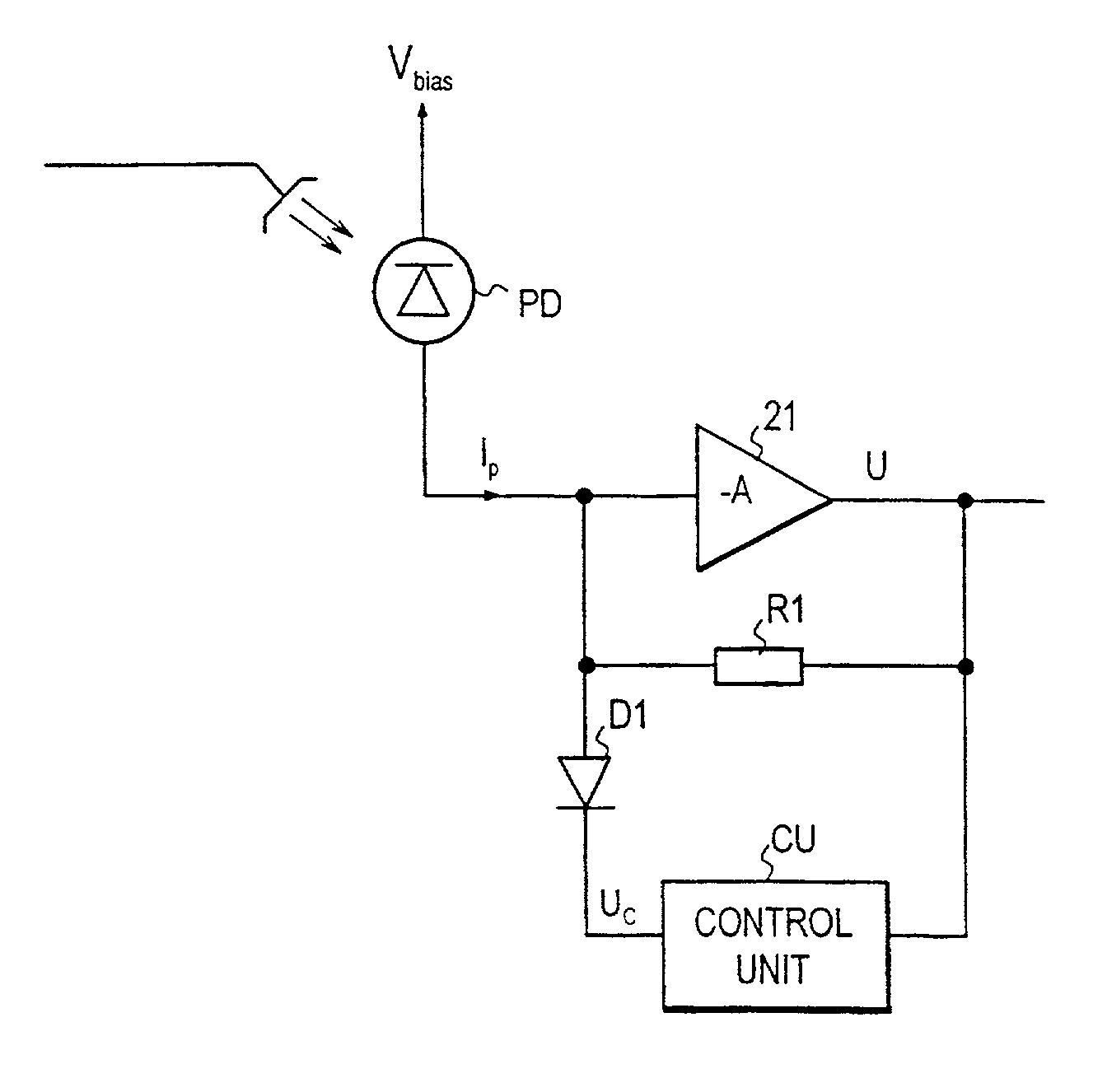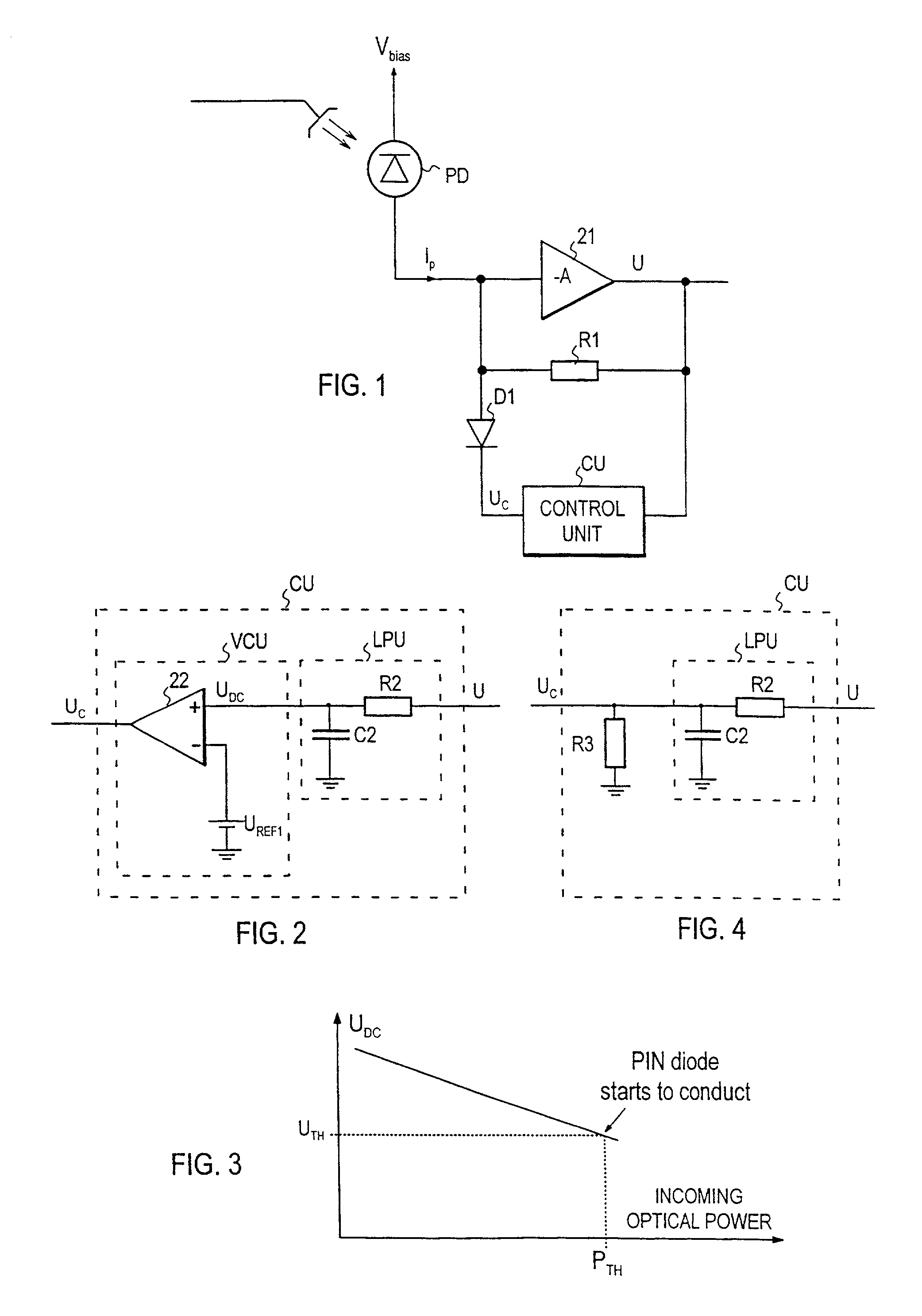Optical receiver
a receiver and optical technology, applied in the field of optical receivers, can solve the problems of as little as possible and achieve the effect of avoiding high stray capacitance and impairing the sensitivity of the receiver
- Summary
- Abstract
- Description
- Claims
- Application Information
AI Technical Summary
Benefits of technology
Problems solved by technology
Method used
Image
Examples
Embodiment Construction
[0024]As is known, a conventional non-optical PIN diode operates at low frequencies as a conventional diode (as a rectifier) but after a certain threshold frequency as a normal resistor. The dynamic resistance Rd of a PIN diode can, as is known, be represented by formula (1):
Rd=K / IDCX (1)[0025]where IDC is the direct current passing through the diode and K and X are constants dependent on the properties of the diode and are indicated by the manufacturer of the diode.
[0026]In practice, a balanced line code (such as CMI or 5B6B) is used in optical transmission systems, and thus the received optical signal produces on the detector a current whose direct current component is half of the peak value Ipeak, i.e. IDC=0.5×Ipeak. When this current passes through the PIN diode, formula (2) is obtained for the peak value Upeak of the voltage over the PIN diode:
Upeak=Rd×Ipeak=K / IDCX×Ipeak=2×K×IDC1−X (2)
[0027]However, with PIN diodes the constant X will typically have a value close to one, and ...
PUM
 Login to View More
Login to View More Abstract
Description
Claims
Application Information
 Login to View More
Login to View More - R&D
- Intellectual Property
- Life Sciences
- Materials
- Tech Scout
- Unparalleled Data Quality
- Higher Quality Content
- 60% Fewer Hallucinations
Browse by: Latest US Patents, China's latest patents, Technical Efficacy Thesaurus, Application Domain, Technology Topic, Popular Technical Reports.
© 2025 PatSnap. All rights reserved.Legal|Privacy policy|Modern Slavery Act Transparency Statement|Sitemap|About US| Contact US: help@patsnap.com


